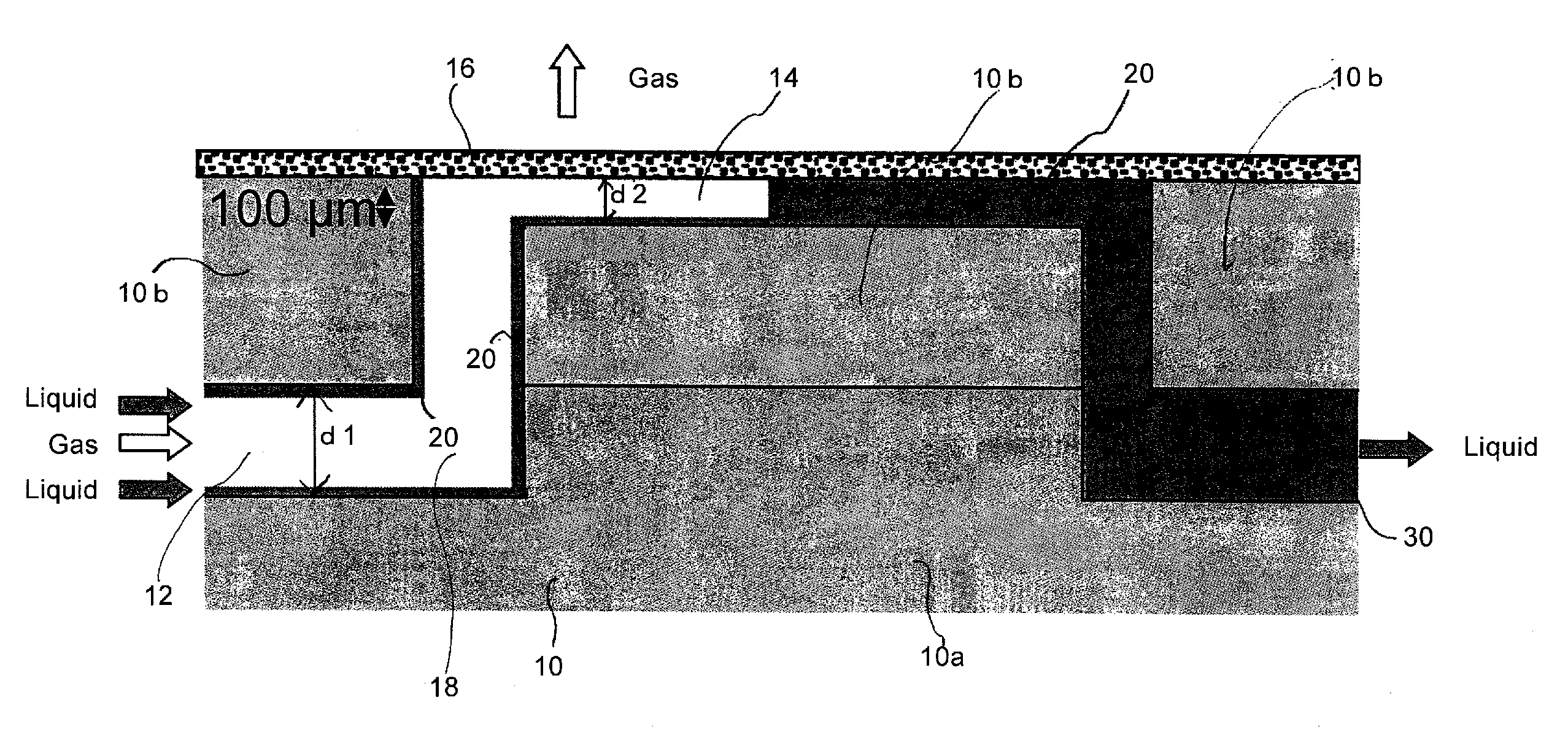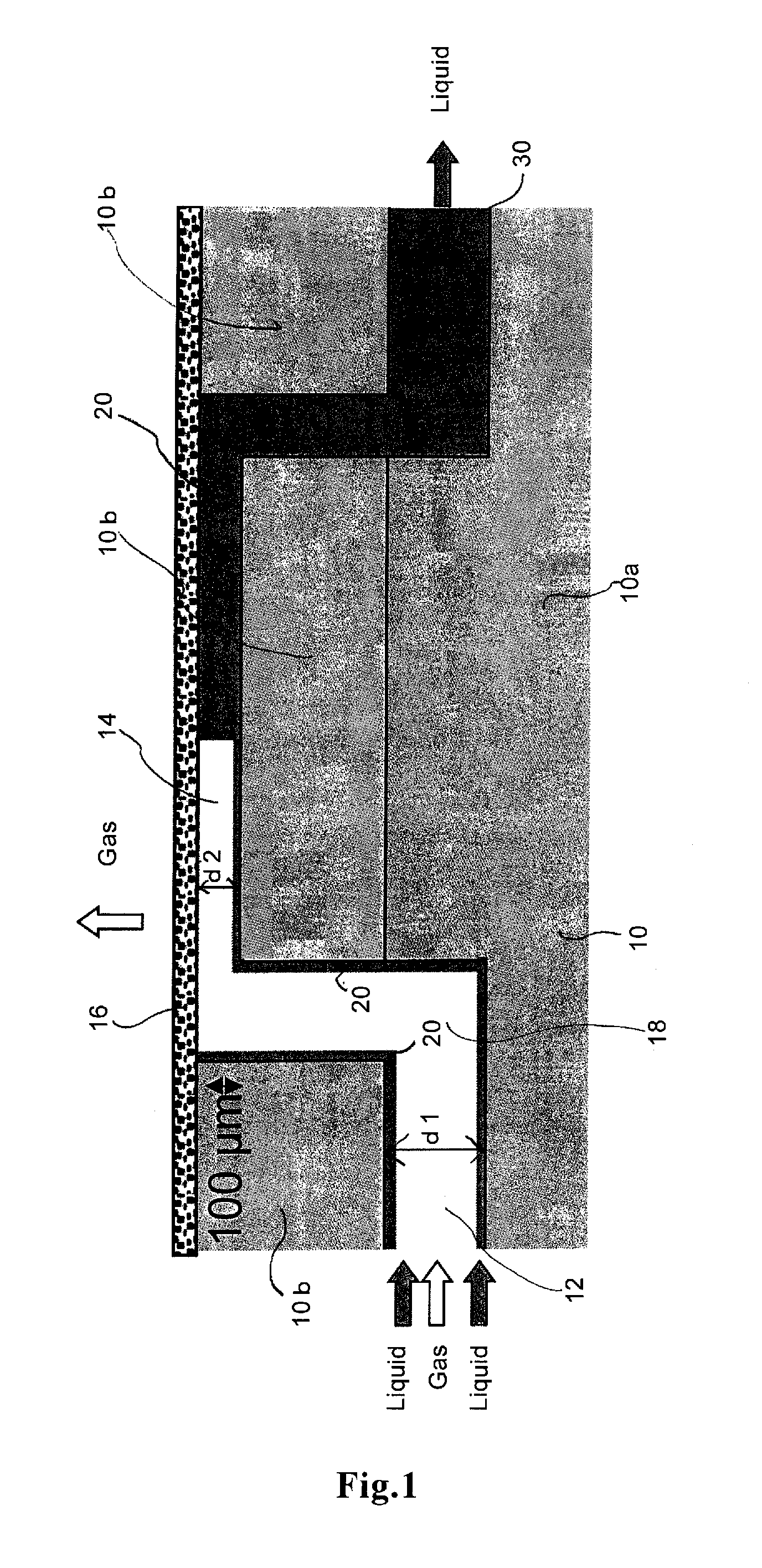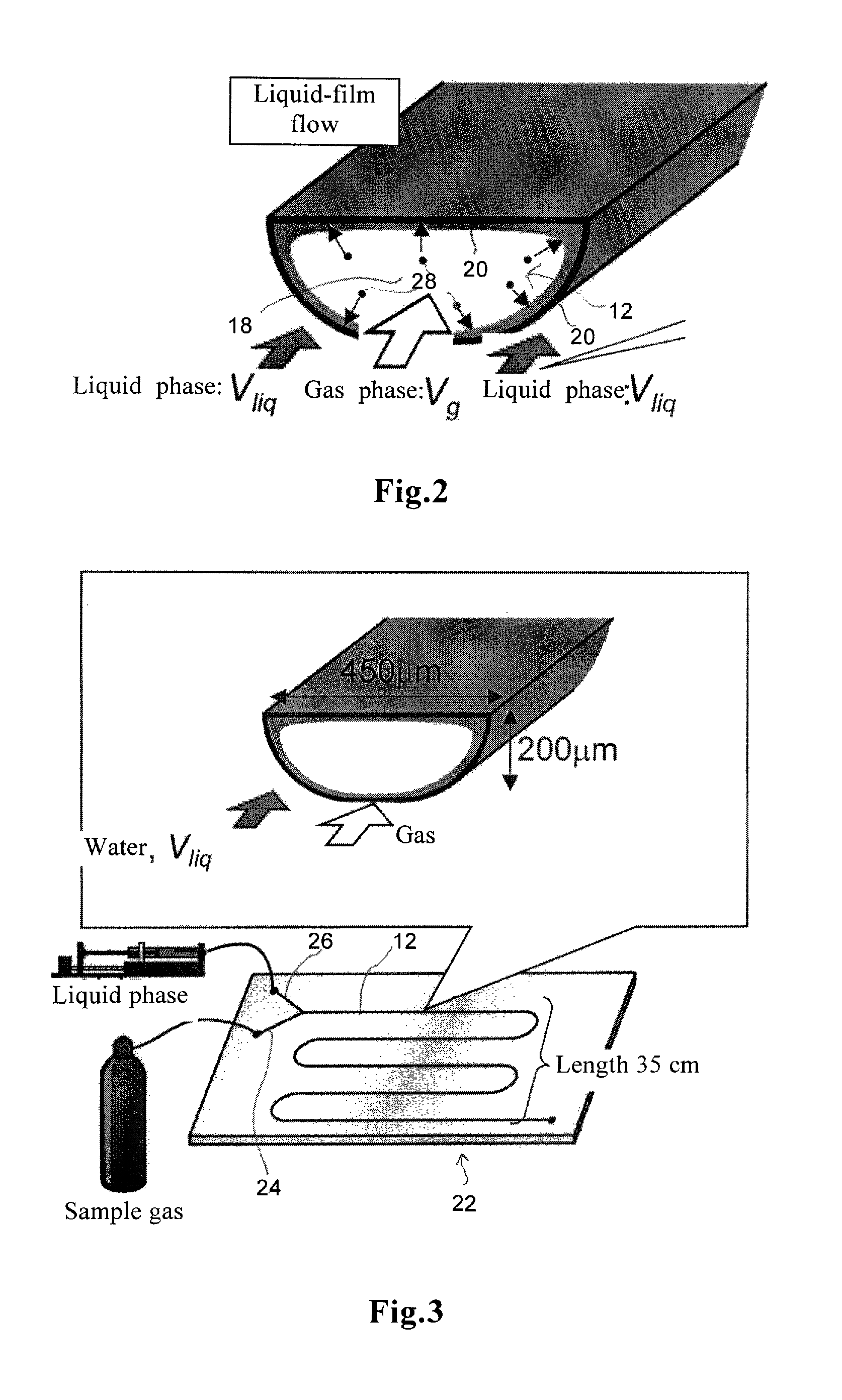Microchannel chip and method for gas-liquid phase separation using same
a microchannel chip and gas liquid phase separation technology, applied in the direction of photometry, optical radiation measurement, biological material analysis, etc., can solve the problems of deteriorating accuracy of ultra-fine process patterning, increasing the defect rate, and inability to prompt action, etc., to achieve good reproducibility and high sensitivity
- Summary
- Abstract
- Description
- Claims
- Application Information
AI Technical Summary
Benefits of technology
Problems solved by technology
Method used
Image
Examples
example 1
[0062]A microchannel chip having the gas-liquid phase separation microchannel shown in FIG. 1 was prepared. The schematic plan view thereof is shown in FIG. 4. To the test substance-measuring microchannel 30, an oxidizing solution introduction microchannel 34 and a coloring solution introduction microchannel 36 were connected. In the microchannel chip shown in FIG. 4, after allowing a collection solution to which ammonia gas was dissolved to pass through a gas-liquid phase separation part, the collection solution is once led to a tube arranged outside of the chip (indicated by a solid arrow in FIG. 4). The collection solution is then re-introduced to the channel inside the chip and combined with a coloring solution and an oxidizing solution and these are allowed to react in a further downstream of the microchannel. It is noted here that FIG. 4 shows a substrate on which microchannels are formed and that the microchannel of the part enclosed in a rectangle and indicated as “gas-liqui...
PUM
| Property | Measurement | Unit |
|---|---|---|
| depth | aaaaa | aaaaa |
| depth | aaaaa | aaaaa |
| porosity | aaaaa | aaaaa |
Abstract
Description
Claims
Application Information
 Login to View More
Login to View More - R&D
- Intellectual Property
- Life Sciences
- Materials
- Tech Scout
- Unparalleled Data Quality
- Higher Quality Content
- 60% Fewer Hallucinations
Browse by: Latest US Patents, China's latest patents, Technical Efficacy Thesaurus, Application Domain, Technology Topic, Popular Technical Reports.
© 2025 PatSnap. All rights reserved.Legal|Privacy policy|Modern Slavery Act Transparency Statement|Sitemap|About US| Contact US: help@patsnap.com



